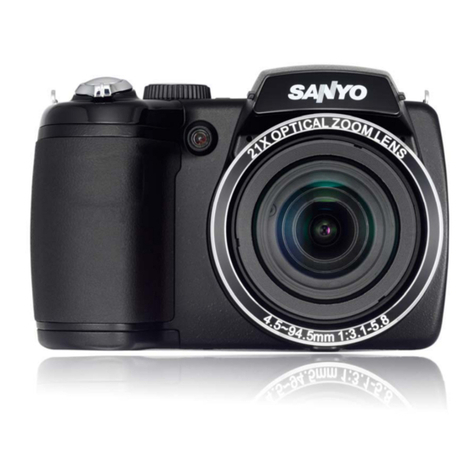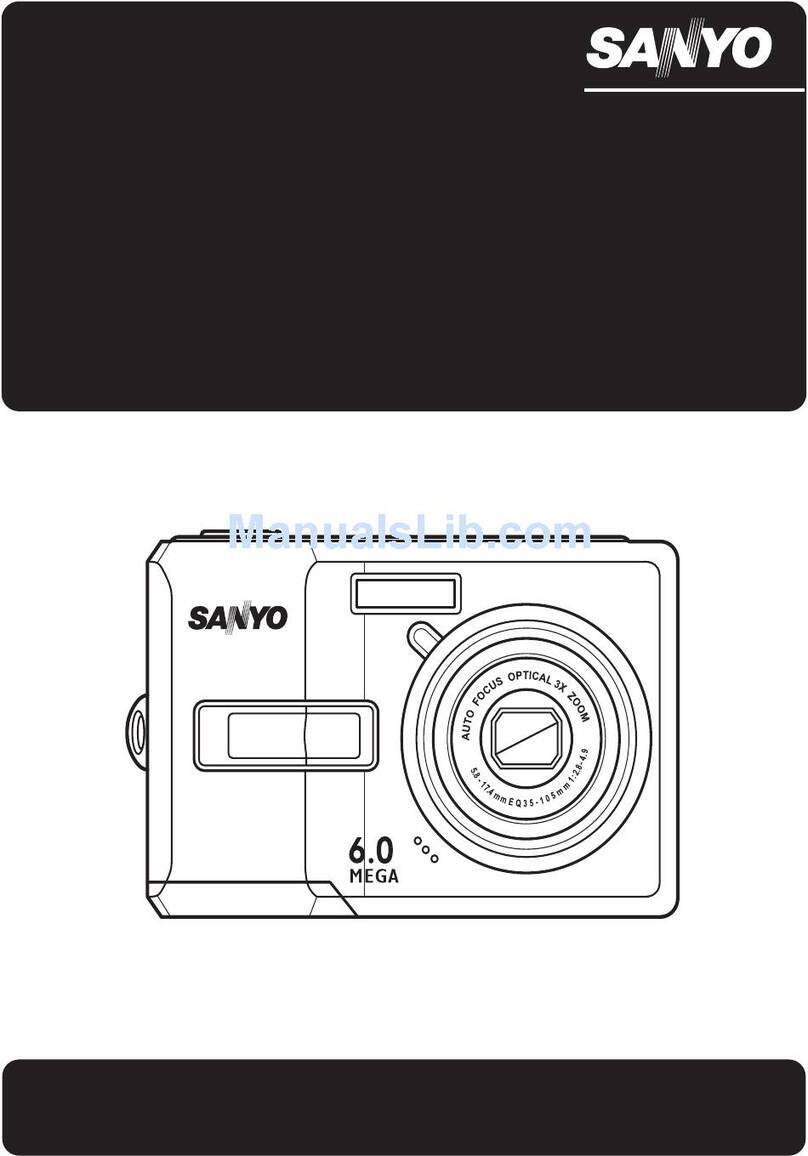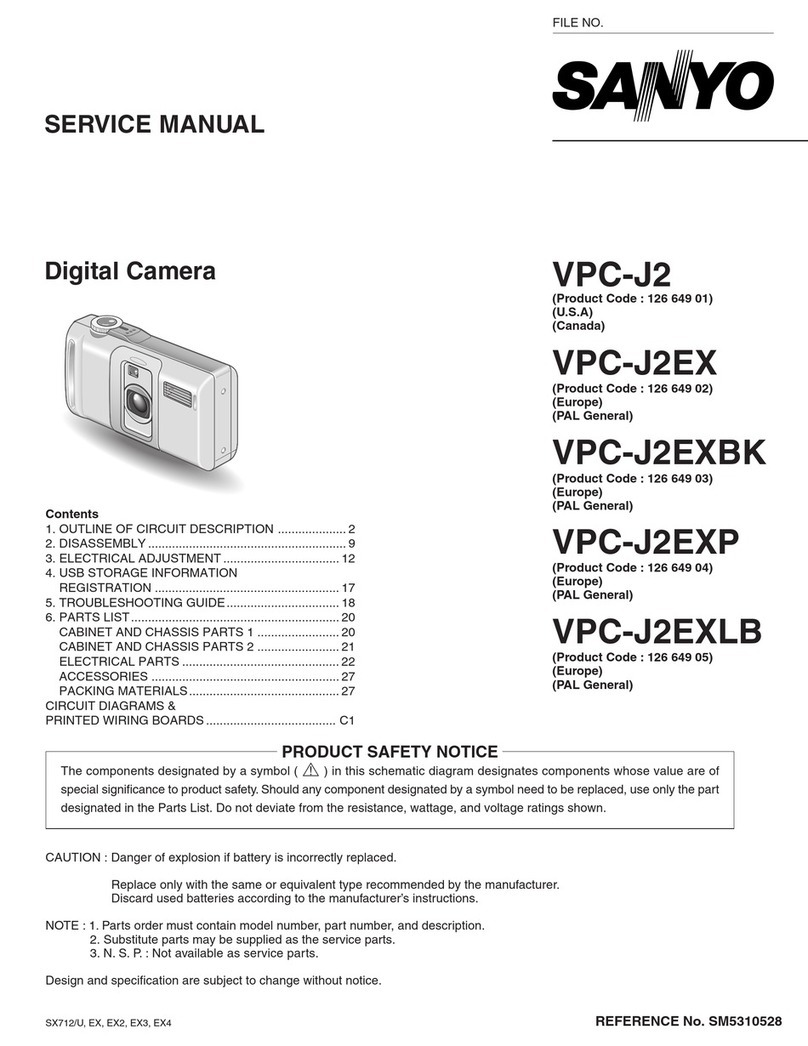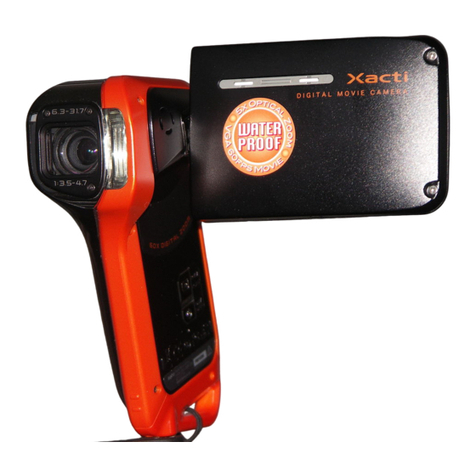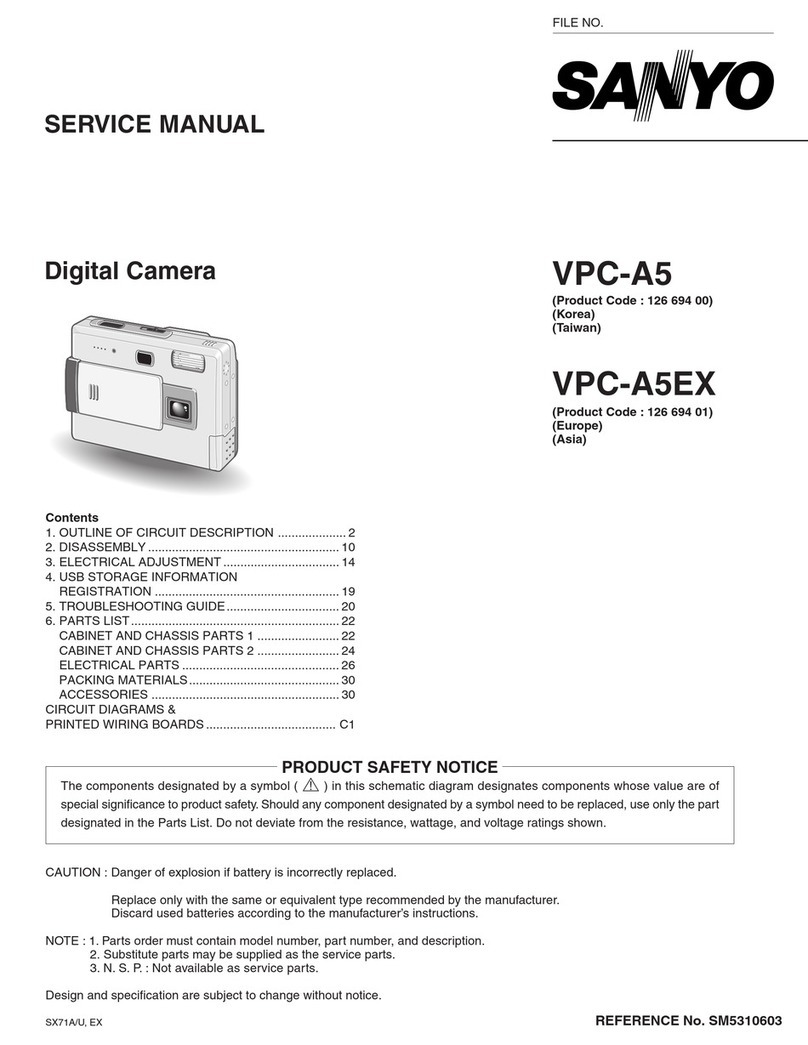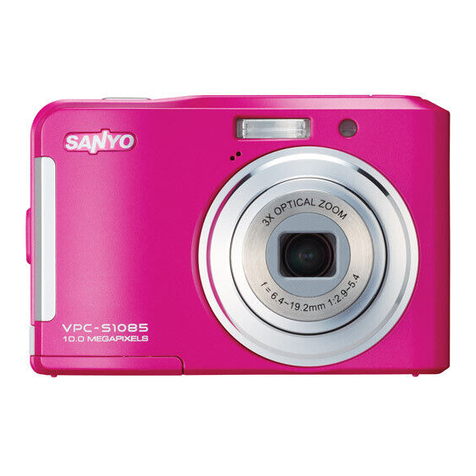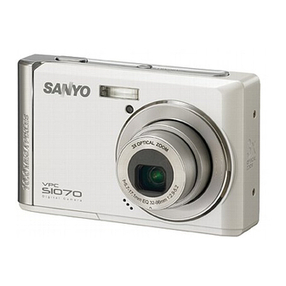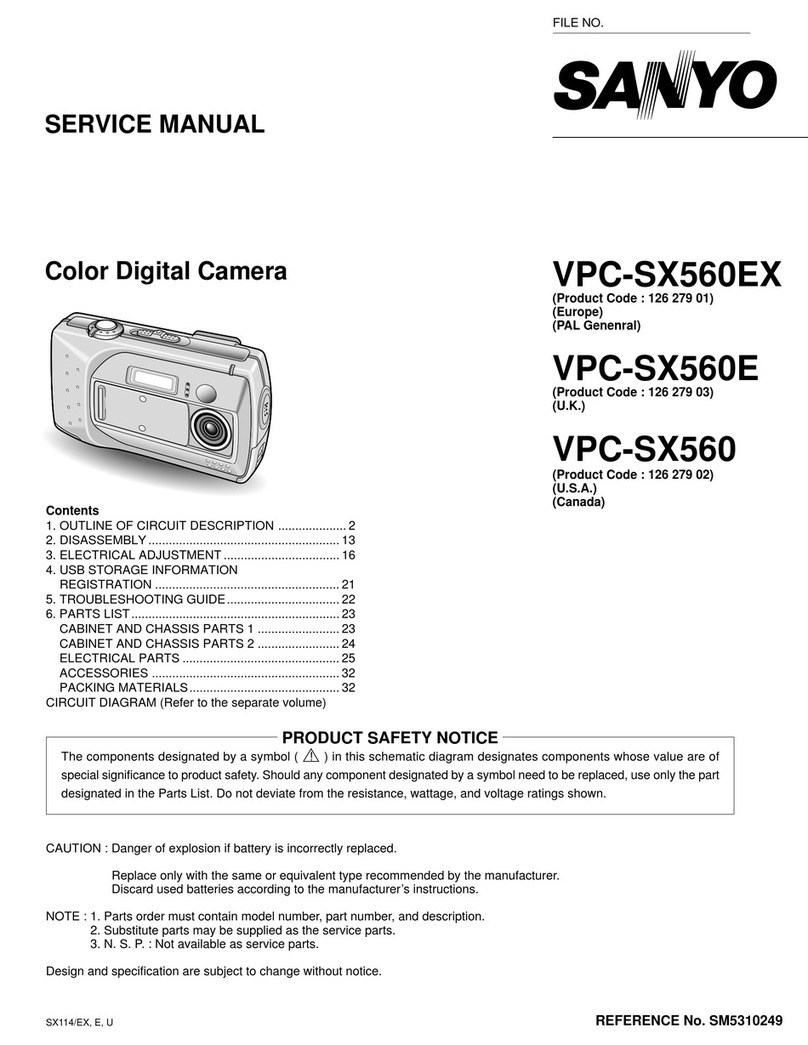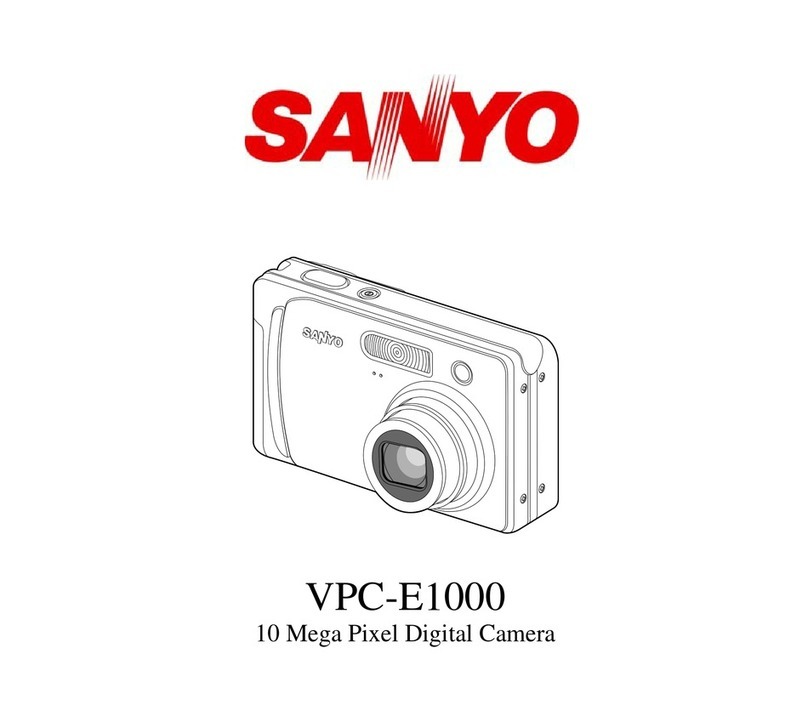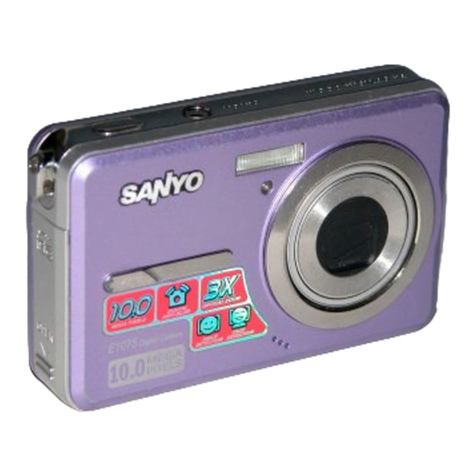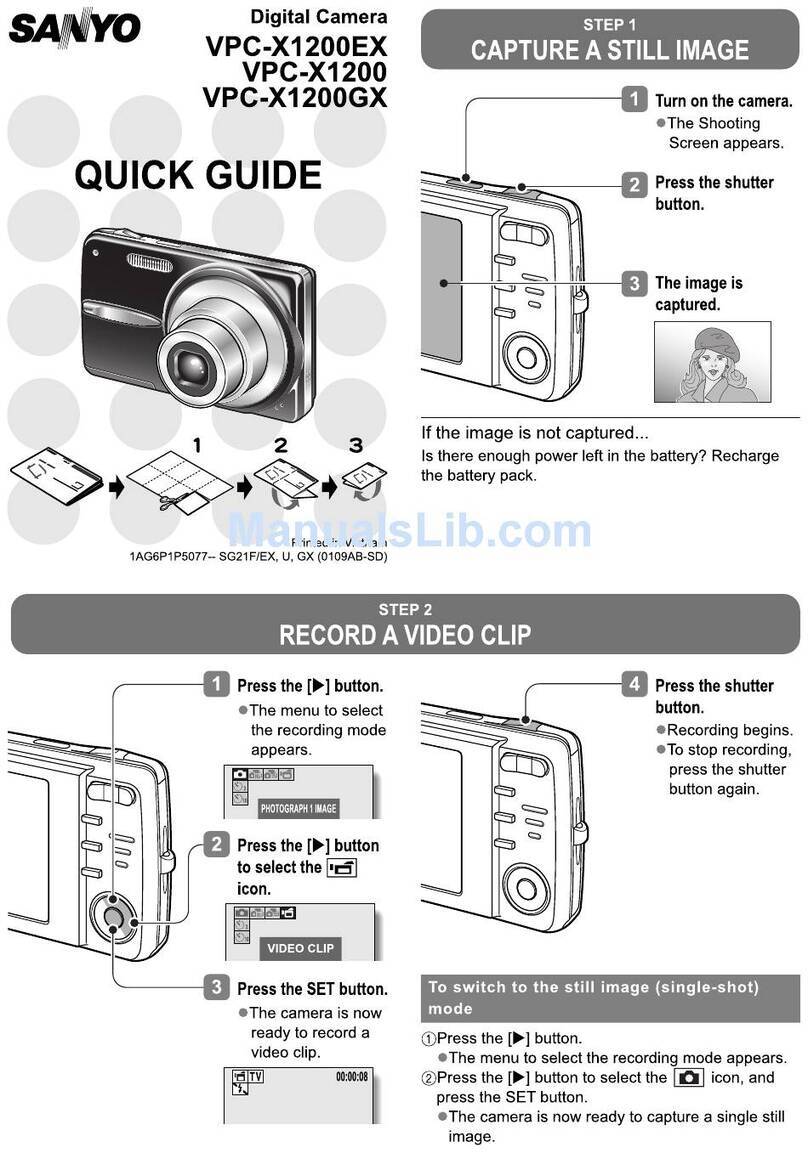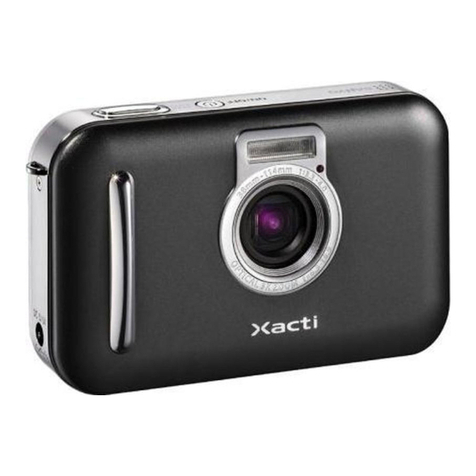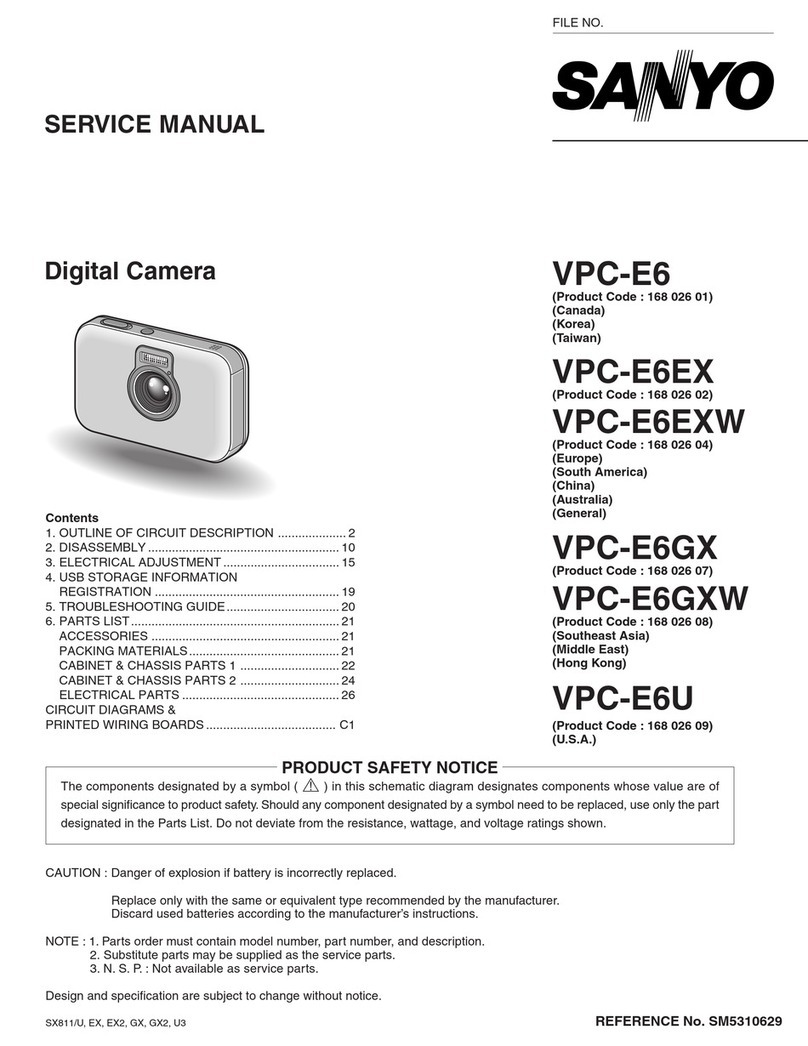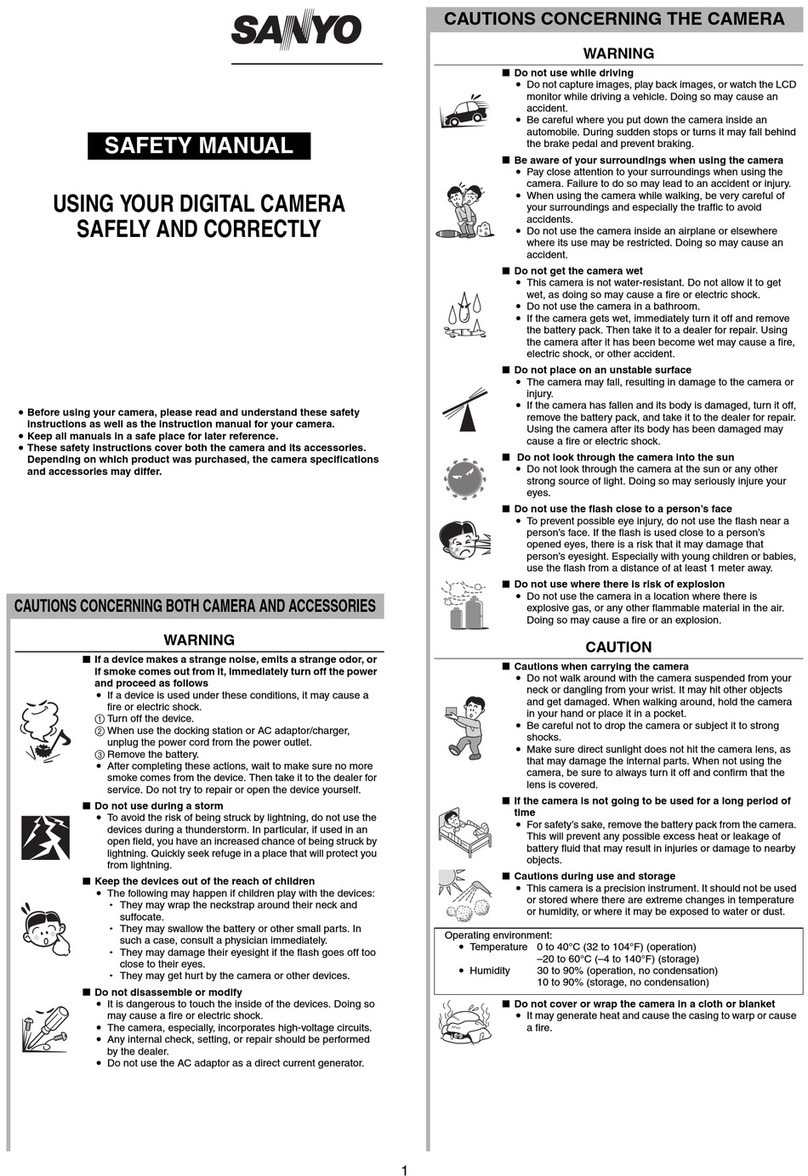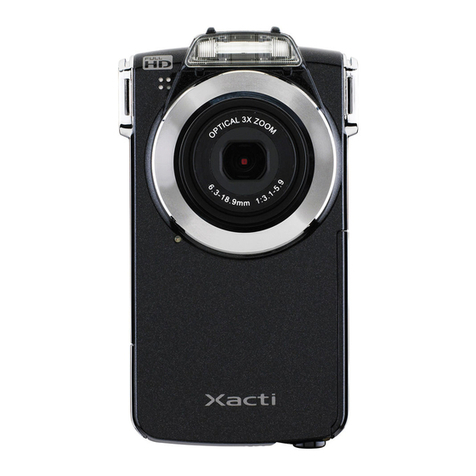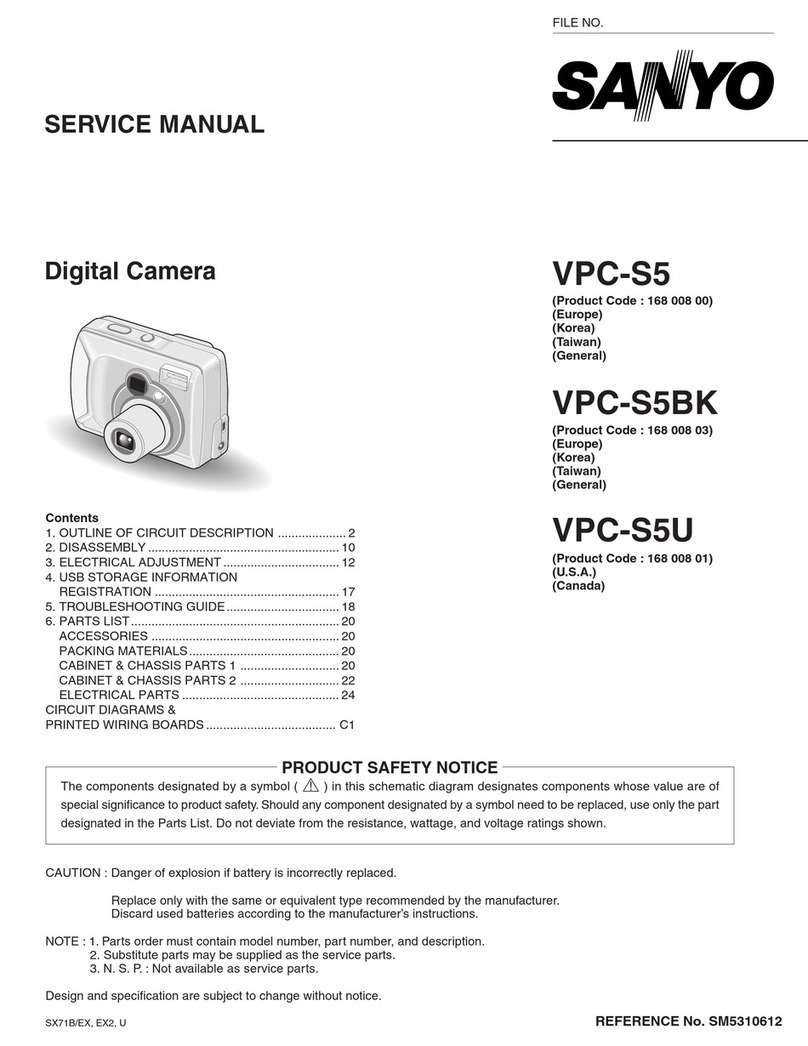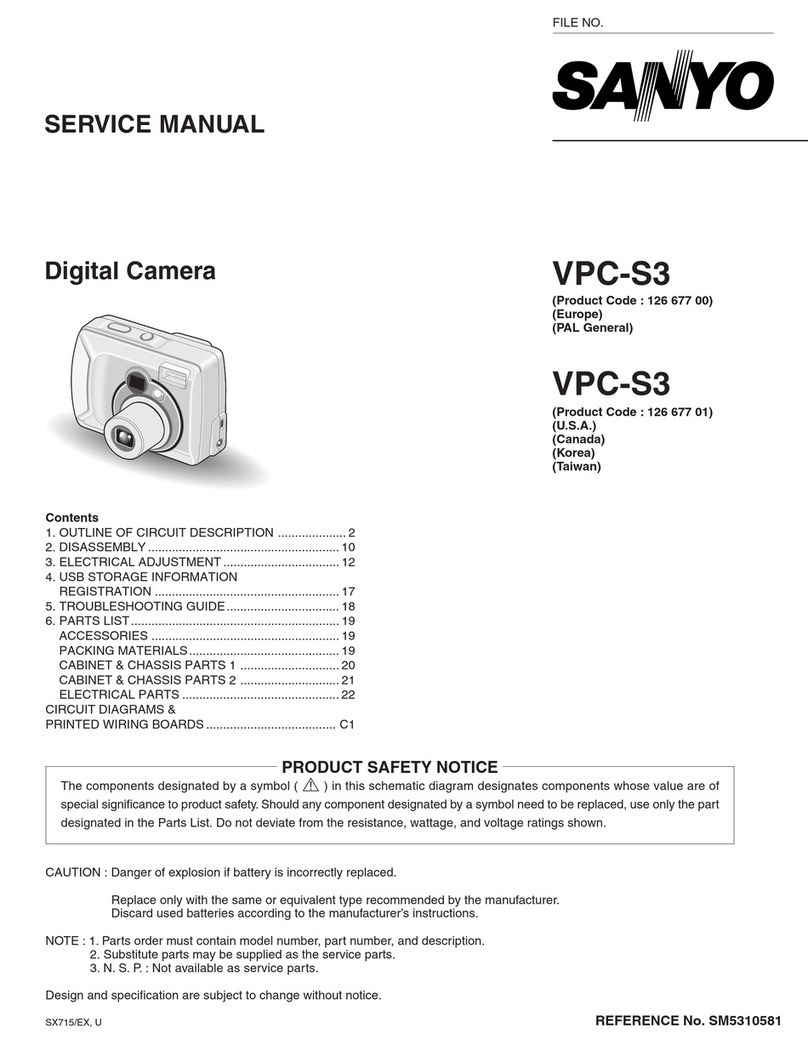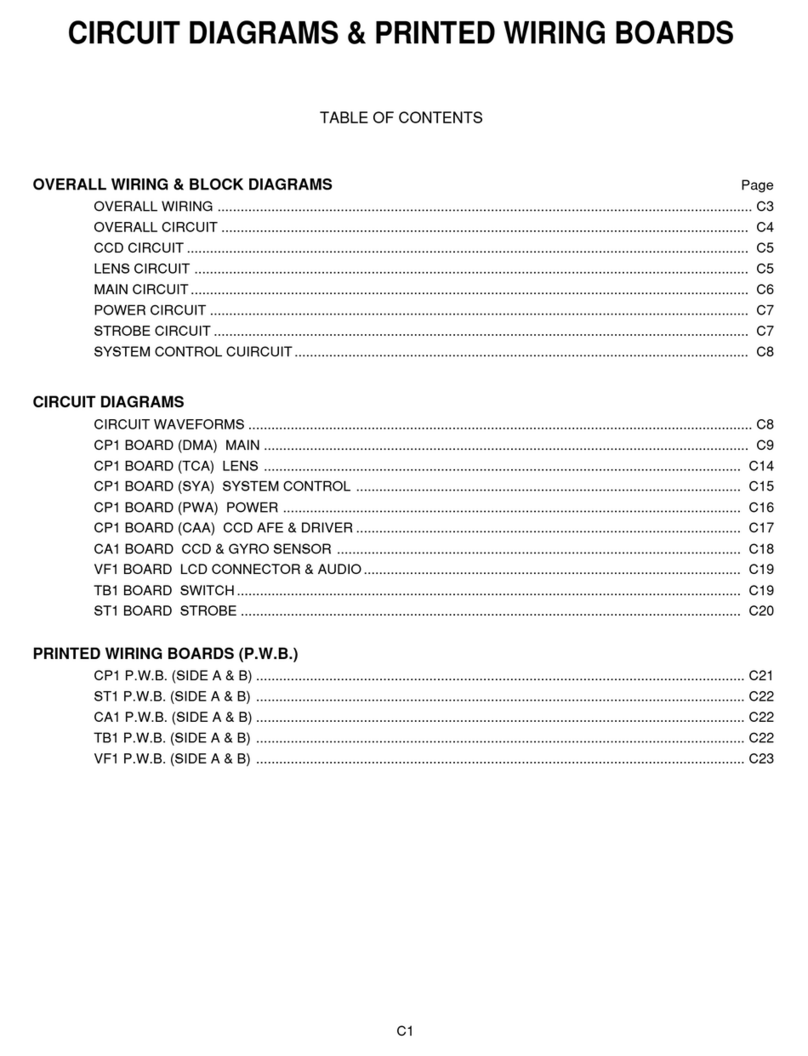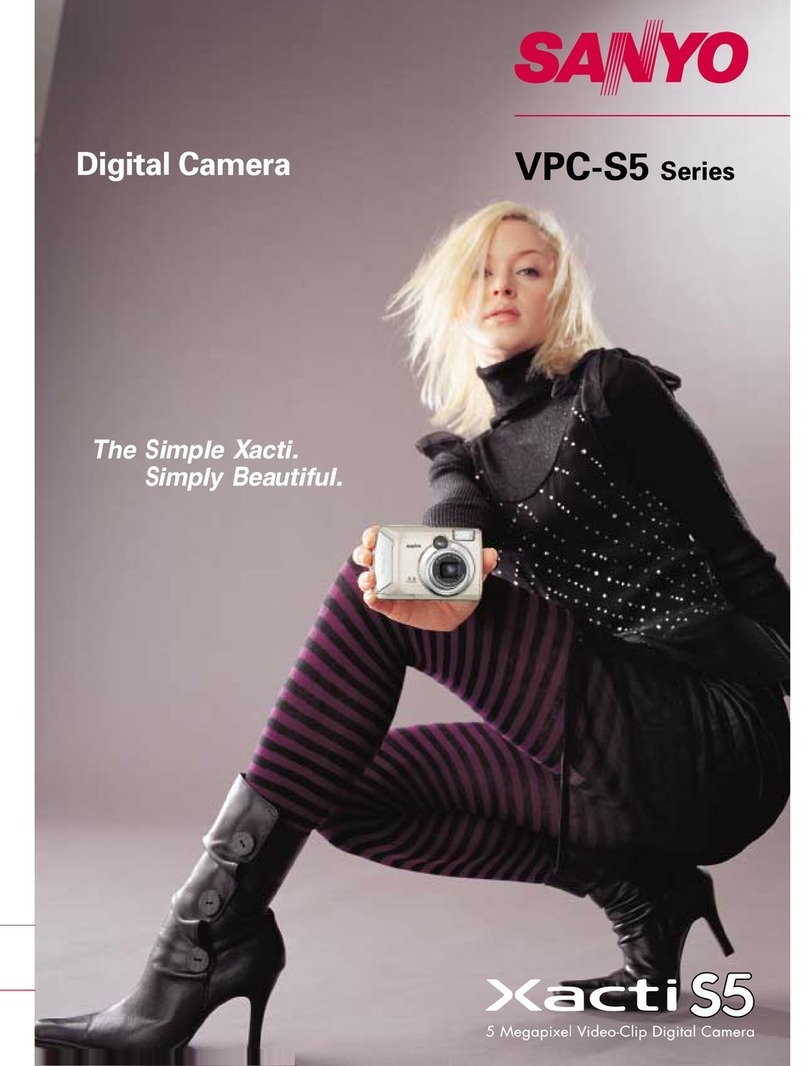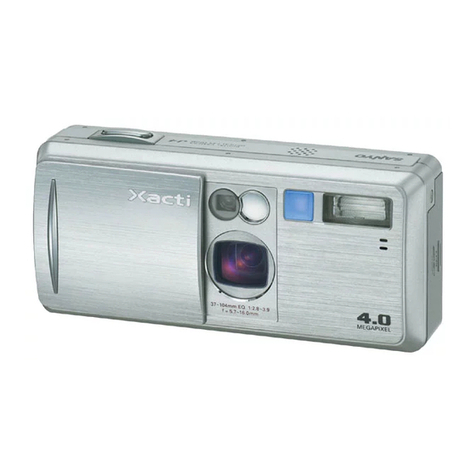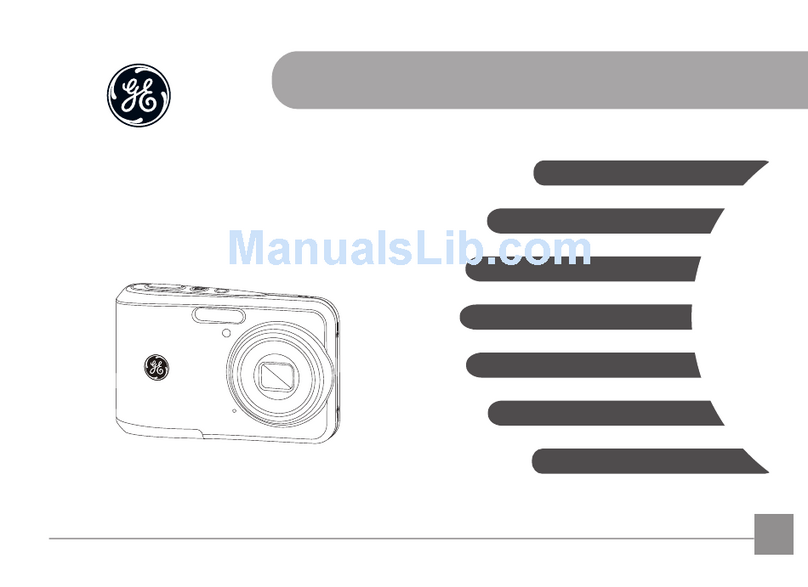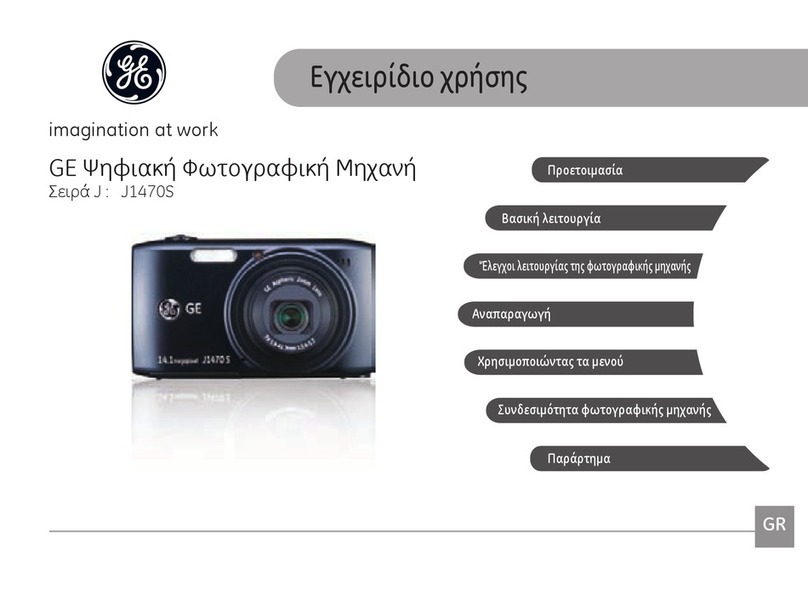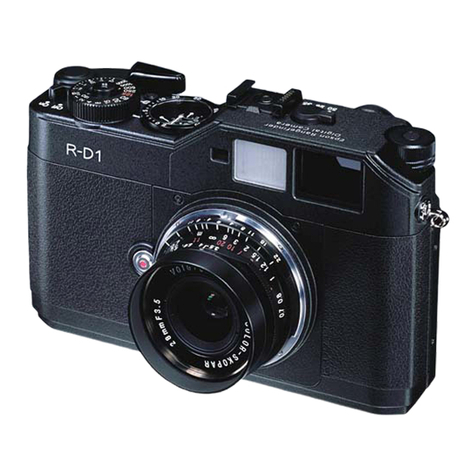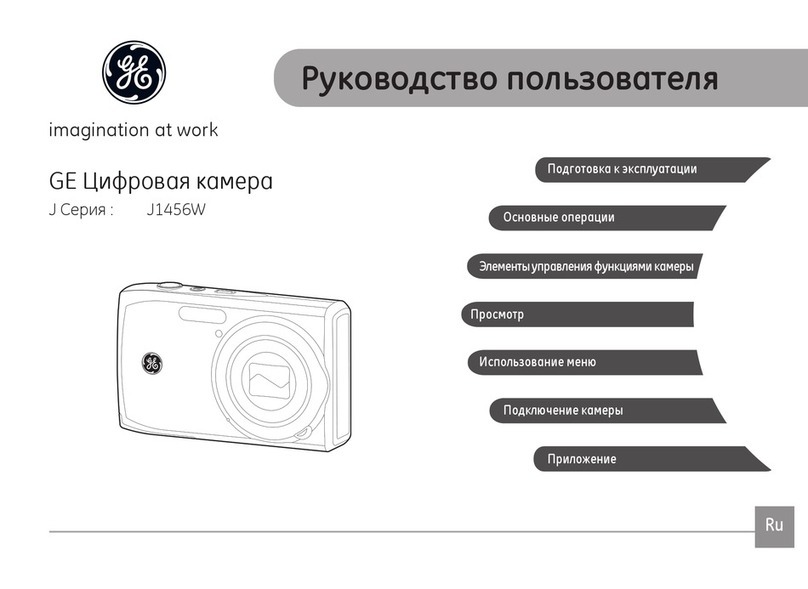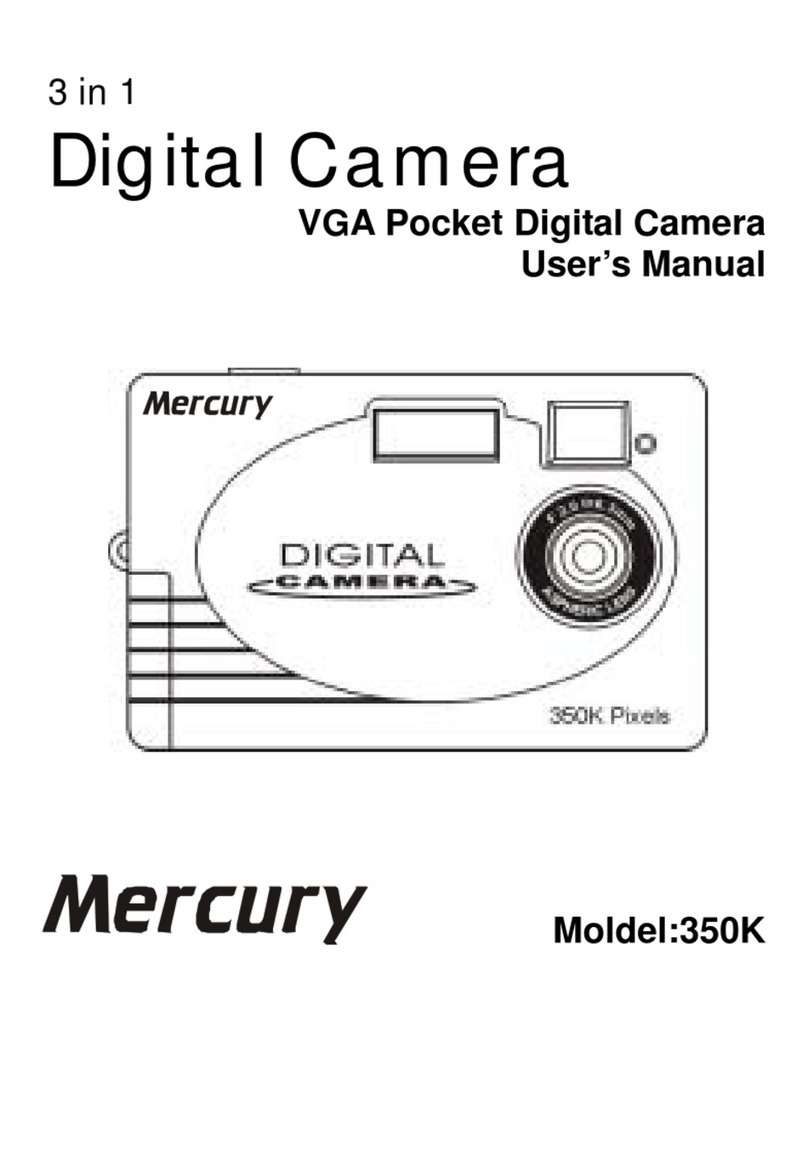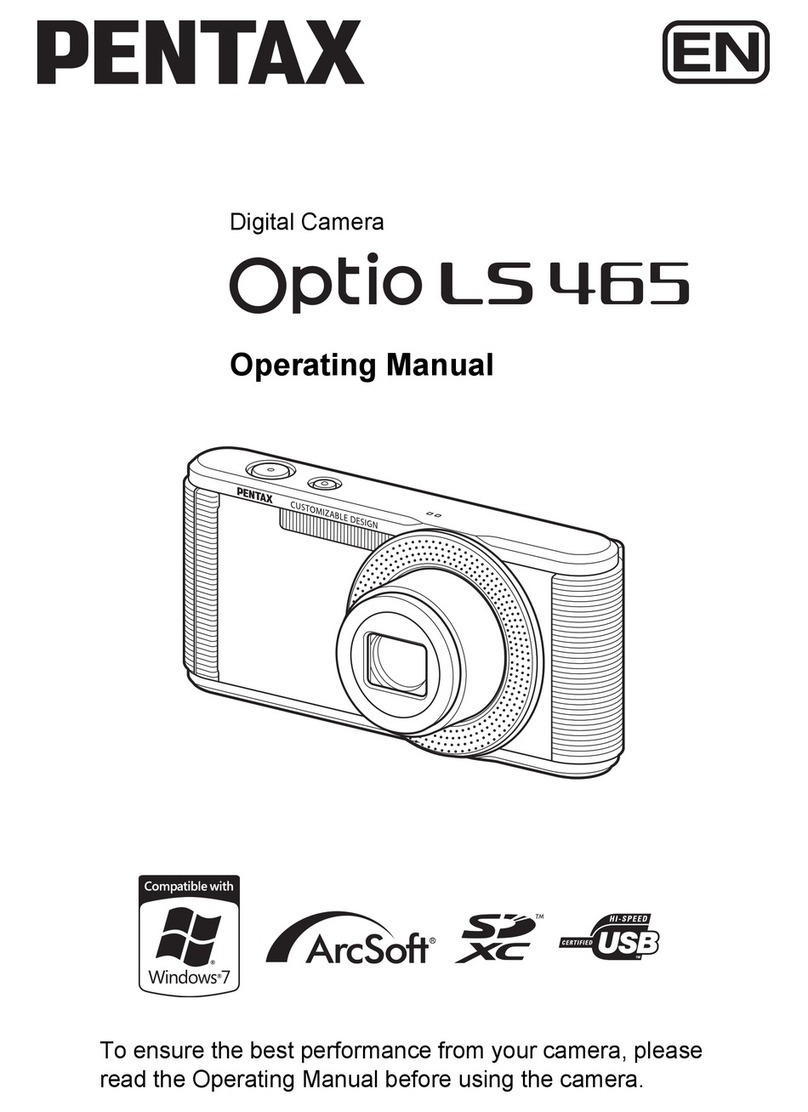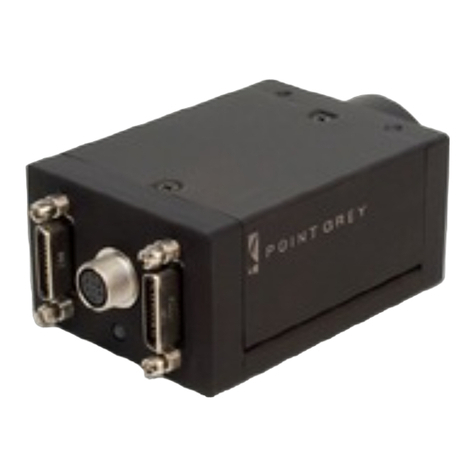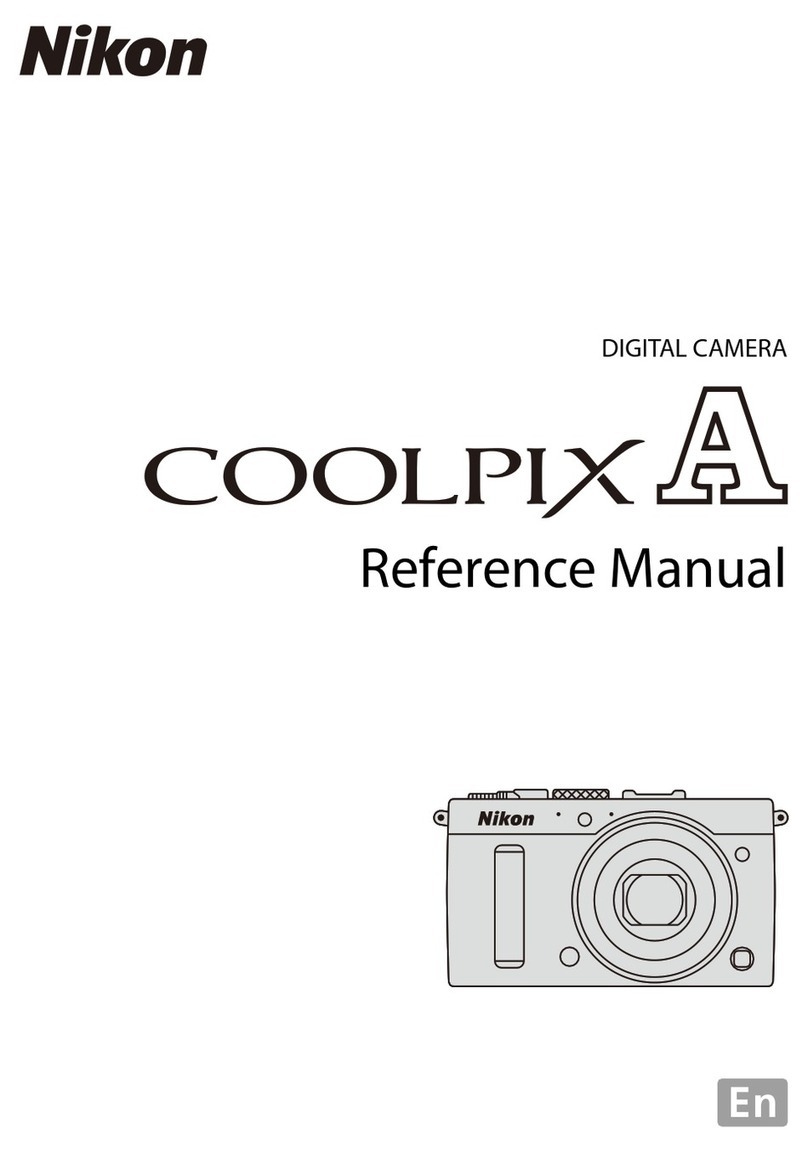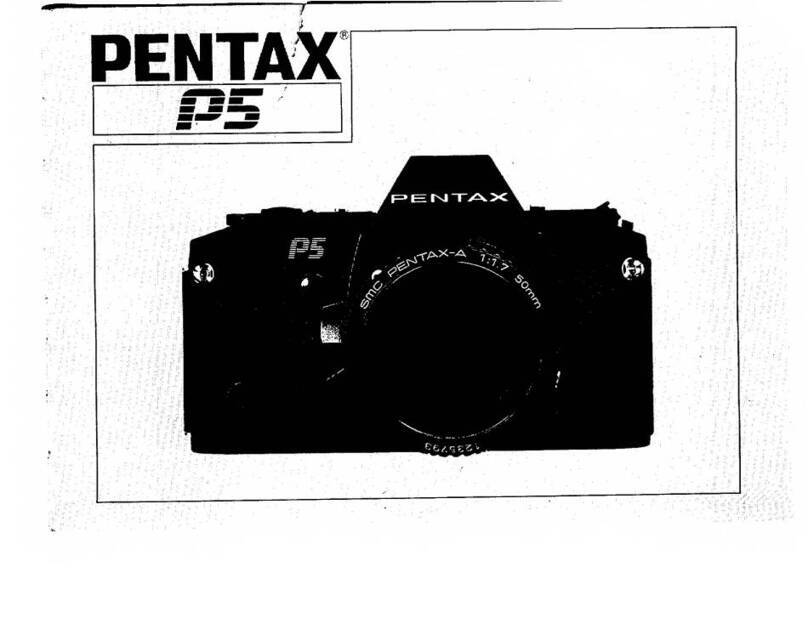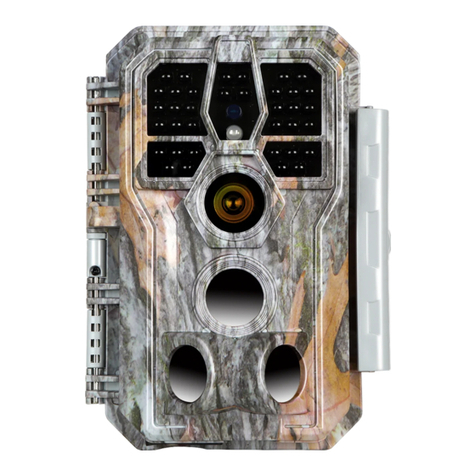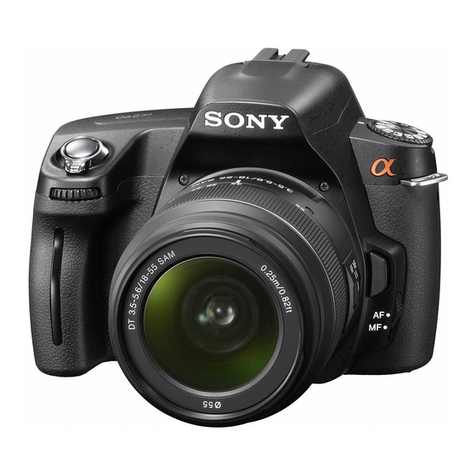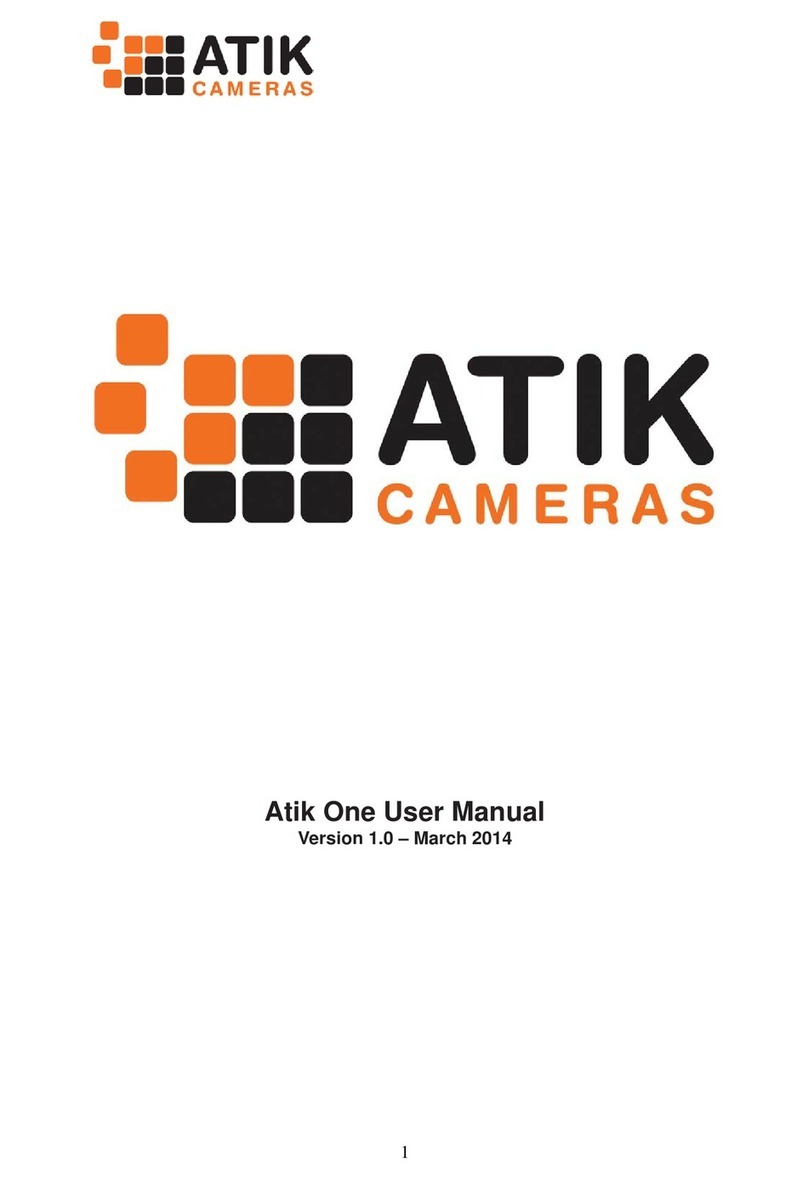
4
SANYO Electric Co., Ltd.
CAUTIONS CONCERNING THE BATTERY
kGeneral precautions concerning the batteries (when using alkaline
batteries)
iUse only alkaline batteries or other specified batteries in this camera.
Manganese batteries cannot be used, as they have a short battery life
and may overheat, causing damage to the digital camera.
iUse of an alkaline battery together with a Ni-Cd battery, or a new battery with
an old or consumed battery, may generate heat or cause the batteries to leak,
resulting in fire, injury or burns, or damage to the camera and any other
nearby object.
iUse of batteries without protective casings or other inferior products may
cause a fire, injury, or burns.
iDo not attempt to recharge dry-cell batteries.
iIf the digital camera is not going to be used for a long period of time, remove
the batteries and store them in a cool place. (When the batteries are removed
for a long period, the time and date settings will be cleared.)
iIf using rechargeable batteries instead of alkaline batteries, use after fully
recharging with the exclusive battery charger. Be sure to read and
understand the instruction manuals that may come with the batteries you
purchase, as well as the instruction manual for the battery charger, before
use.
kCautions concerning use and storage of the rechargeable Li-ion battery
pack
iTemperature when using or recharging: 0 to 40°C (32 to 104°F)
iDo not use the battery pack near fire or inside a car exposed to the hot
sun, etc. (locations in which the temperature reaches 60°C [140°F] or
higher).
iAt high temperatures, the safety mechanisms and protective devices inside
the battery pack may be damaged by corrosion, causing an abnormal
chemical reaction to occur, or cause the battery pack to catch fire, explode,
leak or spew battery fluid, or generate heat. If the safety mechanisms and
protective devices are damaged, the battery pack will become unusable.
iAn environment with extremely high or low temperatures will cause the
battery capacity to deteriorate and shorten the usable time, and may even
shorten the battery life.
iAvoid storing the battery pack with it near full charge. It is recommended to
store the battery pack when it is near fully discharged.
iIf the battery pack is completely discharged, it may become unable to be
recharged again. To avoid this, charge the battery pack for at least five
minutes every six months.
iStorage temperature: –10 to 30°C (14 to 86°F)
When not using the battery pack, remove it from the camera and store at –10
to 30°C (14 to 86°F) in a place with no condensation.
iDo not keep in a place where the temperature reaches 45°C (113°F) or
higher.
iHumidity: 10% to 90% (no condensation)
kCautions when cleaning the camera
1Turn off the camera and remove the battery pack.
(For safety, remove the power cord plug of the AC adaptor from the power
outlet.)
2Remove the dirt with a soft cloth.
If the camera is extremely dirty,
3Wipe with a soft cloth moistened with a mild detergent diluted with water and
wrung dry.
iDo not use benzene or thinner products to clean the camera. Doing so may
cause deformation, discoloration, or paint peeling. When using a chemically
treated cloth, carefully read its instructions and warnings.
iDo not spray insecticides or volatile sprays on the camera. Do not let rubber
or vinyl objects contact the camera for a long period. They may cause
deformation, discoloration, or paint peeling.
iWipe the monitor with a soft cloth that has been moistened with water and
well wrung out. Wiping with a cloth soaked with a cleaning substance or
chemicals will erode the finish or cause it to peel.
kCaution concerning the battery pack
iPeriodically clean with a dry cloth the terminals (contacts) of the battery pack.
Do not touch the battery terminals with your bare hands. Doing so will allow
contaminants from your hands to adhere to the terminals and oxidize,
increasing the contact resistance. If the contact resistance increases, the
usable life of the batteries will diminish.
kCaution when cleaning the lens
iIf the lens gets dirty, use a commercially available air blower or a cleaning
cloth for photographic equipment to clean it.
kWhen not using the camera for a long period
iRemove the battery pack. However, when the battery pack is removed for a
long time, the camera functions may begin to not work properly.
Periodically reinstall the battery pack and check the camera functions.
iIf the battery pack is left in the camera, a small amount of power is still used
even if the camera is turned off. If a rechargeable battery pack is left in the
camera for a long period, it may become completely discharged and lose its
ability to be recharged again.
kCautions concerning condensation
iUsing the camera with condensation inside it may damage the camera.
iPlace the camera in a plastic bag and seal it, and then wait until the camera
has reached the ambient temperature.
iWhen moving the camera suddenly from a cold place to a warm place.
iWhen the ambient temperature changes drastically, such as when a heater is
turned on to quickly heat the room.
iWhen the camera is placed in the path of cool air from an air conditioner.
iWhen the camera is placed in a location of high humidity.
kCaution concerning undesired interference
iThe camera may create undesired interference if used close to a television or
radio. To avoid this type of interference, make sure the cores on the supplied
cables are not removed.
* The type (shape) and quantity of cable(s) supplied may differ depending on
which product was purchased.
iIf the docking station or AC adaptor/charger is used in close proximity to a
radio or TV set, it may cause interference such as static in AM broadcast
signals or noise in the TV image. In this case, increase the distance between
the radio or TV and the device.
kCaution concerning magnetism (for cameras with a speaker)
iDo not place credit cards, bank cards, floppy disks, or other items that may be
damaged by magnetic fields near the speaker. Data may be lost or the
magnetic strips on cards may be damaged.
kCautions concerning data storage
iIt is recommended that any important data be copied onto a separate media
(such as a hard disk, MO disk, or CD-R disk).
iStored data may be lost (or corrupted) in cases such as those listed below.
iSanyo Electric will not be held responsible for any damage or lost profits
arising from the loss of data.
hIf the card is used incorrectly.
hIf the card is not inserted correctly into the camera.
hIf the card is subjected to electrical or mechanical shocks or other forces.
hIf the card is removed from the camera or if the camera is turned off during
reading or writing operations.
hIf the card has reached the end of its usable life.
kCaution concerning rise in battery pack temperature (automatic power
OFF safety feature)
iIf the battery pack temperature should rise to a specific level while the camera
is in use, a \icon will blink on the monitor. Recording and playback are
possible even when the \icon is blinking; however, it is advised that in this
situation you discontinue using the camera and turn it off as soon as possible.
iIf the battery temperature rises further while the \icon is blinking, the
safety feature will operate to automatically turn off the camera, and recording
and playback will not be possible. If this happens, the camera cannot be
turned on until the battery temperature has fallen. Please wait for the battery
to cool down before using the camera again.
FOR CORRECT USE OF YOUR CAMERA
kCautions before capturing important images
iBefore capturing important images, make sure that the camera is operating
properly and in condition to capture the images properly.
iSanyo Electric shall not be held responsible for any losses that result from
images that could not be recorded, are erased, destroyed, or damaged in
any way due to a problem with the camera, any of its accessories, or its
software.
kCaution concerning copyrights
iThe images you capture with your camera are for your own private use; any
other use may violate the rights of copyrights owners.
iPlease note that photography may be restricted at stage performances,
shows or exhibitions, even in presentations whose purpose is entertaining or
amusing individuals.
iAlso note that images that are intended to be copyrighted cannot be used
outside those limits defined by the regulations of the relevant copyright laws.
Cleaning procedure
CAUTION
If condensation seems likely to form
Be careful of condensation under the following conditions
Dedicated USB interface cable
Core
Dedicated S-AV interface cable
Core

